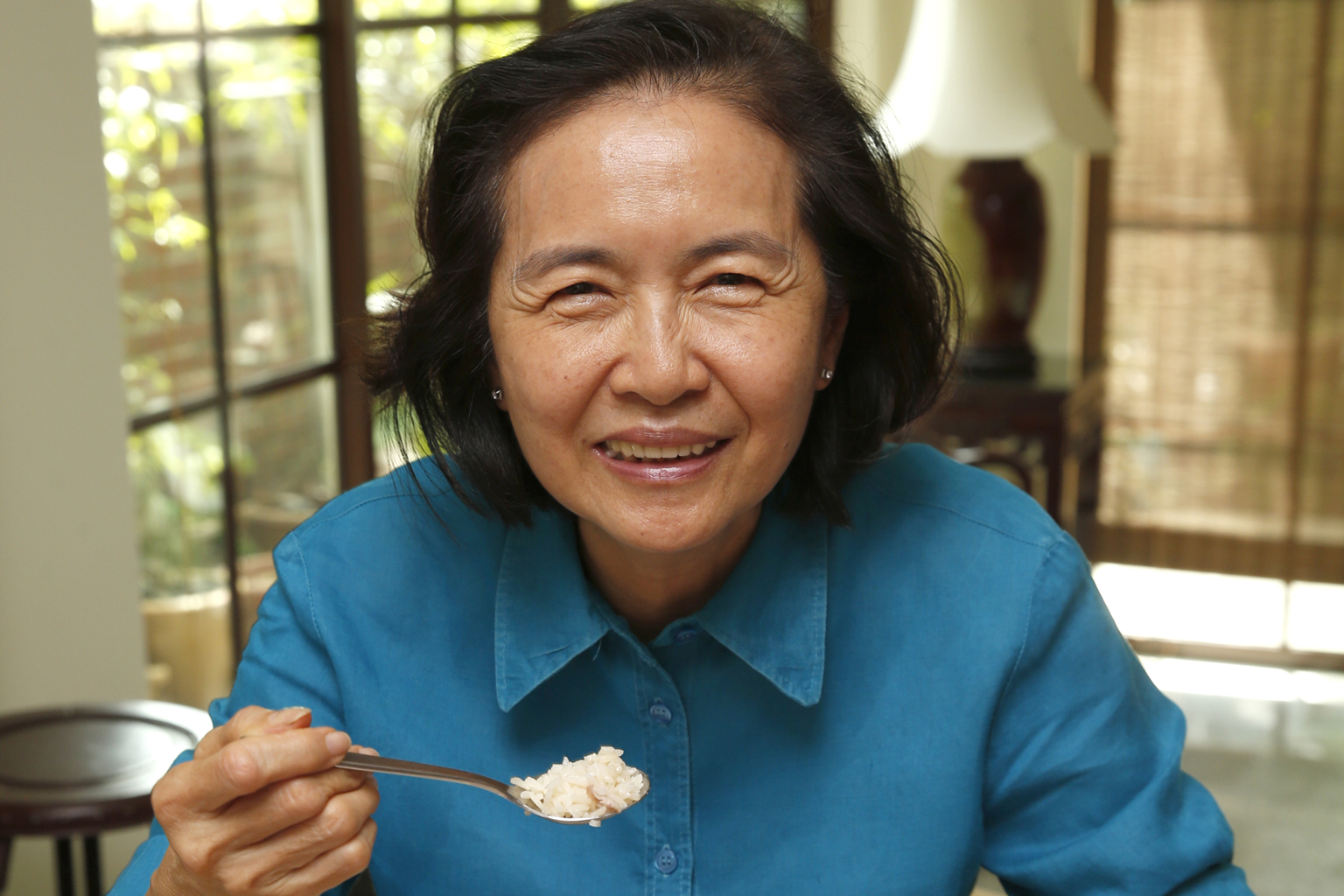Survivor
Eating was a pain for more than 30 years
Teacher had a rare disorder - achalasia - which made swallowing almost impossible
Sign up now: Get ST's newsletters delivered to your inbox

After years of not being able to eat more than a few mouthfuls of anything, Madam Chan can now happily tuck into chicken rice, one of her favourite dishes. She underwent a procedure last year which involved sending a flexible tube called an endoscope through her mouth into the oesophagus to cut the muscle fibres that were preventing food from entering her stomach.
ST PHOTO: LAU FOOK KONG
Joan Chew
Follow topic:
For more than 30 years, Madam Chan Choon Lin, 69, did not know why meal times were, literally, a pain in the neck for her.
Swallowing was painful and she coped in the early days by forcing herself to swallow hard.
But it came to a point when drinking a cup of water took her an excruciating 10 minutes.
The Chinese teacher, who spends at least four hours a day talking, was exasperated that she could not drink even when she felt thirsty.
At work, she stopped eating her lunch after only four to five mouthfuls and had to continue with the meal later in the day.
Whenever colleagues asked about her eating habit, she cooked up excuses, such as feeling unwell or not having much appetite that day.
Madam Chan said: "I did not tell them about my difficulty in swallowing because I could not explain it myself."
The early medical tests she had did not shed light on her problem, so she tried to find ways to help herself by opting for softer food, such as porridge and noodle soup.
When she sometimes felt that food had become stuck in her throat, she forced herself to regurgitate by putting a finger down the back of her throat.
She recalled: "After that, I would try to eat again by drinking a small amount of water and then an even smaller amount of food, hoping to get it down my throat successfully."
The mother of two even stopped travelling because she could not enjoy the local delicacies.
In 2006, when she was 60, Madam Chan finally had a name for her problem.
She learnt that she had a rare disorder, known as achalasia, after undergoing a test that measures pressures in the oesophagus - a muscular tube which transmits food from the mouth into the stomach.
Once food enters the oesophagus, it is transmitted down through a series of muscular contractions by a process called peristalsis.
The test found that she had a tight lower oesophageal sphincter and an absence of peristalsis - two key features of achalasia, said Associate Professor Jimmy So, a senior consultant at the National University Hospital's (NUH's) division of general surgery.
It was why food got stuck in her oesophagus, instead of entering her stomach, and caused her extreme discomfort. Over time, the oesophagus became dilated and worsened her problem.
Achalasia affects about one in 100,000 people worldwide, though the exact cause is unknown.
For the next seven years, Madam Chan had about six endoscopic Botox injections to paralyse the muscle of the oesophageal sphincter to allow her to swallow more easily.
The injections gave her reprieve, but she was disappointed they did not last.
The effect of Botox is transient, with more than half of patients relapsing after a year and requiring multiple injections.
The duration of effect also shortens subsequently, said Prof So, who has a special interest in upper gastrointestinal disorders.
Last August, Madam Chan underwent a scarless procedure known as peroral endoscopic myotomy, or Poem for short, with Prof So.
Poem involves sending a flexible tube called an endoscope through the patient's mouth into the oesophagus to cut the muscle fibres that are preventing food from entering the stomach.
The older method of laparoscopic myotomy involves dividing the muscles in the oesophagus by making five or six small cuts in the abdomen.
Madam Chan is one of 22 patients who have benefited from Poem, which was first offered at NUH at the end of 2014.
About 40 doctors will be trained in Poem at a symposium and hands-on workshop at NUH on April 29.
The Journal Of The American College Of Surgeons reported last year that 90 per cent of 500 achalasia patients remained symptom-free three years after undergoing Poem.
Adverse events were rare (3.2 per cent) and there were no deaths.
Another study showed that compared with laparoscopic myotomy, Poem is quicker, requires a shorter hospital stay and is equally efficacious.
At NUH, Poem costs about $4,000 for a subsidised patient and about $15,000 for a private patient. These costs include three days of hospital stay.
Madam Chan knows first-hand how the simple joy of eating and drinking should not be taken for granted.
She counts chicken rice and apples among her favourites, which she steered clear of previously.
"I couldn't enjoy food for so many years, but now I can eat all kinds of food.
"When you see delicious food and cannot eat, what joy is there in living?" she said.

